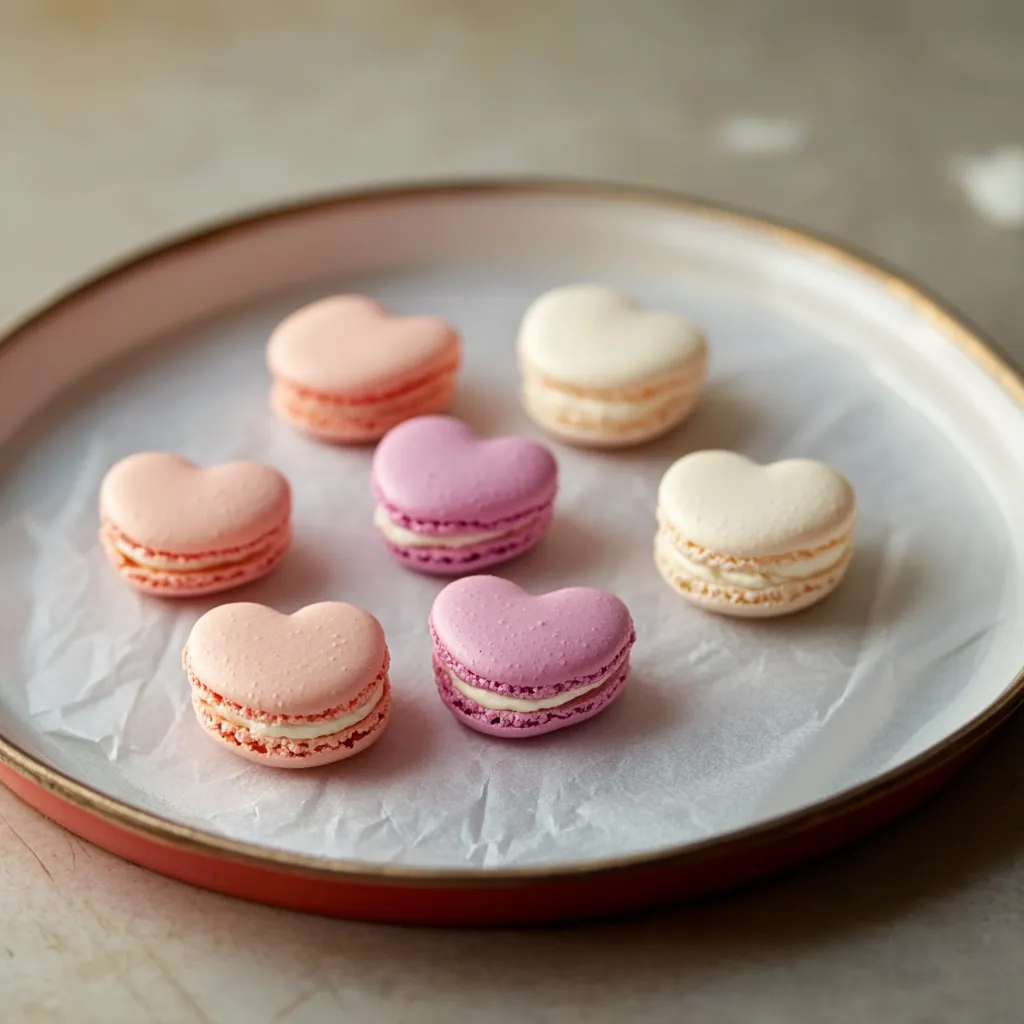 Pin it
Pin it
These dainty almond-infused shells with smooth, sugary centers make the ultimate macaron - and crafting them into hearts shows that extra bit of affection. These French sweets need time and accuracy, but once you've got them down, you'll feel amazing. After tweaking this method in my own home, I can guarantee these heart-formed goodies will turn into your go-to special event treat.
My first try at heart macarons ended up looking more like odd lumps than hearts! But thanks to tips from a French dessert expert, I found out how to get them just right. These days my grandkids beg for them whenever there's something to celebrate.
Must-Have Ingredients Breakdown
- Powdered sugar (1 cup for shells, 1 cup for filling): needs to be totally smooth with no bumps for flawless shells
- Almond flour (½ cup): pick blanched, extra-fine almond flour for the best finish
- Egg whites (2 large): let them sit out for 24 hours to get better stability
- Granulated sugar (¼ cup): works to keep your meringue firm
- Unsalted butter (½ cup): go for European-type for a more luxurious filling
- Pure vanilla extract (½ tsp shells, 1 tsp filling): stick with genuine extract, skip the fake stuff
Crafting Stunning Heart Macarons
- Step 1: Getting Your Foundation Ready
- First off, sift the powdered sugar and almond flour together three times - don't skip this! Any tiny clump will be obvious in your finished shells. Spread out parchment paper and sketch heart outlines on the back as your guides. Make sure your egg whites are room temp and completely yolk-free.
- Step 2: Whipping Up the Meringue
- Start beating your egg whites on low until they foam up. Slowly turn up to medium-high, adding granulated sugar a tablespoon at a time. Keep going until you see stiff, shiny peaks form - when you lift the beater, the peak should stand upright with just a tiny curl at the end.
- Step 3: The Vital Macaronage Phase
- Put your dry mix into the meringue in three batches. With a big spatula, fold using a J-motion, scraping bottom and sides. Your mix should flow like melted lava - when you raise the spatula, the ribbon should sink back into the mix within 30 seconds.
- Step 4: Making Heart Designs
- Load your piping bag with a round tip. Hold it straight up and down, squeeze a small dot, pull down for the point, then create two matching curves at the top. Ease off pressure gently and move away without leaving a pointy bit.
- Step 5: Waiting and Baking
- Let your piped hearts sit until they form a skin - if you touch them lightly, nothing should stick to your finger. Bake them in an oven heated to 300°F (150°C) for 18-20 minutes. They should grow little feet but stay pale.
 Pin it
Pin it
When I was young, my mom always said patience makes macarons special. Now I get it - hurrying any part leads to problems, but taking it slow creates something wonderful.
How Shells Form Properly
The waiting time lets a skin develop on your shells, which helps create those distinctive feet during baking. A good skin feels dry when you touch it lightly and looks a bit less shiny.
Getting Your Filling Just Right
Your filling needs to be sturdy enough to stay put but soft enough to bite through. When putting them together, match shells that look the same size and press until the filling just reaches the edges.
Keeping Them Fresh
New macarons need a full day to settle in the fridge. Then they'll stay good up to 5 days. If you want to keep them longer, you can freeze the empty shells for up to 3 months.
 Pin it
Pin it
Through many years of crafting these fragile treats, I've found that success comes from watching the small things and honoring the steps. Each time I make these heart-shaped goodies, I'm reminded that baking truly shows love. Seeing folks' happy faces when they taste a perfectly made macaron makes all the careful work so worthwhile.
Frequently Asked Questions
- → Why rest macarons before baking?
- Letting them sit forms a dry layer on top, which is what gives them their iconic 'feet' and a smooth finish.
- → Can I prep macarons early?
- Sure! Keep the filled macarons in an airtight box in the fridge for up to a week, or freeze for three months.
- → Why do macarons come out hollow?
- Hollows often happen if the egg whites are over-whipped or the oven's too hot. Whip to stiff peaks and double-check your heat.
- → Can all-purpose flour replace almond flour?
- No, swapping it out won't work. Macarons need almond flour to achieve their taste and texture.
- → What causes cracked macarons during baking?
- Cracks happen when the shells aren't dry enough before baking or the oven's too hot.
